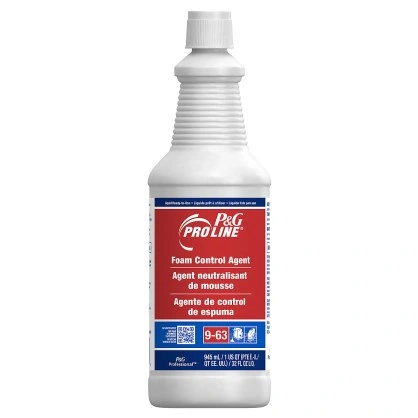The Role of Foam Control in Wastewater Procedure: Finest Strategies and Approaches
Efficient Methods for Attaining Optimum Foam Control in Chemical Production
Reliable foam control is a crucial aspect of chemical production that can dramatically influence production efficiency and item quality. By understanding the mechanisms of foam development and selecting ideal anti-foaming agents, manufacturers can take proactive measures to reduce too much foam.
Understanding Foam Development

Surfactants, or surface-active agents, reduce the surface stress of the liquid, assisting in bubble security and advertising foam generation. Furthermore, frustration or blending processes can improve bubble development, frequently worsening foam issues. The attributes of the fluid tool, including viscosity and density, additional influence foam behavior; for example, even more thick fluids tend to catch air better, bring about enhanced foam stability.
Recognizing these essential elements of foam development is important for reliable foam control in chemical manufacturing. By identifying the problems that advertise foam growth, manufacturers can execute targeted strategies to alleviate its adverse results, thereby optimizing production procedures and ensuring constant product high quality. This foundational understanding is important before checking out certain techniques for managing foam in industrial setups.
Selection of Anti-Foaming Representatives
When selecting anti-foaming agents, it is important to take into consideration the specific characteristics of the chemical process and the sort of foam being generated (Foam Control). Numerous elements influence the effectiveness of an anti-foaming agent, including its chemical structure, temperature stability, and compatibility with other process materials
Silicone-based anti-foams are commonly utilized due to their high efficiency and wide temperature level variety. They function by lowering surface tension, permitting the foam bubbles to coalesce and break more conveniently. Nonetheless, they may not be appropriate for all applications, especially those including sensitive formulations where silicone contamination is a problem.
On the other hand, non-silicone agents, such as mineral oils or organic compounds, can be advantageous in particular circumstances, especially when silicone residues are undesirable. These agents have a tendency to be much less reliable at greater temperatures however can offer efficient foam control in various other problems.
Furthermore, understanding the foam's beginning-- whether it arises from oygenation, agitation, or chain reactions-- overviews the selection procedure. Checking under real operating conditions is essential to make certain that the selected anti-foaming agent satisfies the unique demands of the chemical production procedure properly.
Process Optimization Strategies
Efficient foam control is a crucial facet of enhancing chemical manufacturing procedures. To enhance efficiency and reduce production prices, makers need to apply targeted process optimization strategies. One critical method involves changing mixing setups and rates. By fine-tuning these parameters, operators can reduce turbulence, thereby lessening foam formation throughout blending. look these up
Furthermore, managing temperature and pressure within the system can considerably influence foam generation. Reducing the temperature might decrease the volatility of particular parts, leading to lowered foam. Also, keeping optimal stress levels assists in mitigating too reference much gas launch, which adds to foam security (Foam Control).
One more efficient method is the tactical addition of anti-foaming representatives at critical points of the process. Careful timing and dose can ensure that these representatives efficiently subdue foam without interrupting other procedure specifications.
In addition, including an organized assessment of resources buildings can help recognize naturally frothing substances, enabling preemptive actions. Carrying out normal audits and process testimonials can reveal ineffectiveness and areas for renovation, making it possible for continuous optimization of foam control approaches.
Monitoring and Control Systems
Monitoring and control systems play an essential role in preserving optimum foam management throughout the chemical production procedure. These systems are important for real-time observation and adjustment of foam levels, making certain that production performance is optimized while lessening disruptions triggered by too much foam development.
Advanced sensors and instrumentation are utilized to discover foam thickness and height, offering crucial information that informs control algorithms. This data-driven approach permits the timely application of antifoaming representatives, making sure that foam levels stay within acceptable limits. By integrating monitoring systems with procedure control software, producers can apply computerized feedbacks to foam fluctuations, minimizing the demand for hand-operated treatment and improving operational uniformity.
Furthermore, the assimilation of device learning and predictive analytics into keeping track of systems can assist in proactive foam monitoring. click over here By evaluating historic foam data and operational parameters, these systems can anticipate foam generation patterns and recommend preemptive actions. Normal calibration and upkeep of tracking devices are necessary to guarantee accuracy and dependability in foam detection.
Inevitably, effective tracking and control systems are vital for optimizing foam control, advertising security, and improving overall efficiency in chemical manufacturing settings.

Case Studies and Finest Practices
Real-world applications of tracking and control systems highlight the value of foam management in chemical production. A significant case study involves a large-scale pharmaceutical manufacturer that carried out an automated foam discovery system.
Another exemplary instance comes from a petrochemical firm that adopted a combination of antifoam representatives and process optimization techniques. By examining foam generation patterns, the company tailored its antifoam dosage, causing a 25% decrease in chemical usage and substantial cost financial savings. This targeted method not only minimized foam disturbance yet likewise enhanced the overall security of the manufacturing process.

Conclusion
Finally, attaining ideal foam control in chemical production demands a thorough technique encompassing the choice of suitable anti-foaming agents, execution of process optimization strategies, and the integration of innovative tracking systems. Routine audits and training better improve the efficiency of these methods, cultivating a culture of constant enhancement. By addressing foam formation proactively, producers can considerably enhance manufacturing efficiency and product high quality, inevitably adding to even more sustainable and cost-effective procedures.
By comprehending the systems of foam formation and choosing suitable anti-foaming representatives, producers can take positive procedures to alleviate excessive foam. The qualities of the liquid medium, including viscosity and thickness, additional influence foam actions; for example, even more thick liquids often tend to trap air a lot more successfully, leading to increased foam security.
Understanding these fundamental elements of foam formation is important for reliable foam control in chemical production. By assessing historic foam information and functional specifications, these systems can forecast foam generation patterns and suggest preemptive measures. Foam Control. Normal audits of foam control gauges ensure that processes remain optimized, while promoting a culture of positive foam management can lead to lasting improvements throughout the production range